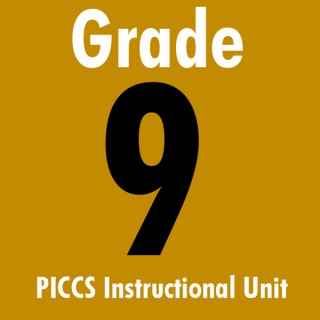
Grade Four Instructional Units
Follow Grade Four Instructional UnitsConnecting to Apple Music.
- Sep 23, 2012 LATEST EPISODE
- infrequent NEW EPISODES
- 9 EPISODES
More podcasts from PICCS
Latest episodes from Grade Four Instructional Units

This fourth grade Science unit addresses Earth Science: Weather and Climate. The question “what is weather?” is answered by students recording weather research over a period of time and synthesizing that information into a weather forecast. (Unit was taught in New York State in late October)

This fourth grade Science unit addresses Earth Science: Weather and Climate. The question “what is weather?” is answered by students recording weather research over a period of time and synthesizing that information into a weather forecast. (Unit was taught in New York State in late October)

Students compare and contrast the parts of a plant cell with the parts of an animal cell. Then, students will create a model to represent the parts of a plant or animal cell. Students will compare the functions of the parts of a cell with the functions of parts of a community.

Students compare and contrast the parts of a plant cell with the parts of an animal cell. Then, students will create a model to represent the parts of a plant or animal cell. Students will compare the functions of the parts of a cell with the functions of parts of a community.

This lesson offers students an opportunity to compare plant and animal parts. Students will do this through plant dissection and comparing component parts of plants vs. animals. After this comparison has been completed, students will synthesize a “plantimal” that tests their ability to group differences and similarities in biology, life functions, and environment.

This lesson offers students an opportunity to compare plant and animal parts. Students will do this through plant dissection and comparing component parts of plants vs. animals. After this comparison has been completed, students will synthesize a “plantimal” that tests their ability to group differences and similarities in biology, life functions, and environment.

This fourth grade Science unit addresses Earth Science: Weather and Climate. The question “what is weather?” is answered by students recording weather research over a period of time and synthesizing that information into a weather forecast. (Unit was taught in New York State in late October)

Students compare and contrast the parts of a plant cell with the parts of an animal cell. Then, students will create a model to represent the parts of a plant or animal cell. Students will compare the functions of the parts of a cell with the functions of parts of a community.

This lesson offers students an opportunity to compare plant and animal parts. Students will do this through plant dissection and comparing component parts of plants vs. animals. After this comparison has been completed, students will synthesize a “plantimal” that tests their ability to group differences and similarities in biology, life functions, and environment.

















